193
ART (871)
Aims:
1. To encourage creative expression in and through
Art.
2. To develop the powers of aesthetic appreciation.
3. To develop an artistic attitude and values
through the study of art.
4. To develop an interest in the world of art.
CLASSES XI & XII
Candidates will be required to take three papers,
including at least one paper from Section A and at
least one paper from Section B.
Papers 1-3 form Section A. Papers 4-6 form
Section B.
Success or failure will depend on a candidate's
performance in the subject as a whole.
SECTIO A
Paper 1: (21/2 hours), Drawing or Painting from
Still Life
A group of objects which will be artificial and natural
and may include such things as cut flowers, fruits,
vegetables, a growing plant, as well as domestic or
other artificial objects; the group may be drawn or
painted. The work can be carried out, if the candidate
wishes, in relation to the surroundings of the part of
the room in which the group is placed. If the group is
painted, the background must be included.
Paper 2: (21/2 hours), Drawing or Painting from
ature
This paper is divided into two separate sections.
Candidates may offer either A or B. In both sections,
the subject may be interpreted freely, either in a
decorative or in a realistic manner.
A. Study of the structure of natural forms such as a
spray or branch, which may include flowers;
foliage or fruit; fossils, bones, etc. Candidates are
expected to reveal their appreciation of natural
growth or structure by means of drawing or
painting.
B. A subject will be set for drawing or painting
outdoors. There should be evidence of direct
study from nature.
Paper 3: (2 hours), Drawing or Painting of a Living
Person
Two alternatives will be given. In alternative (A) the
model (who may be a boy, girl, man or woman) is to
be placed in an attitude which will be described. The
whole figure must be drawn, together with any
necessary artificial or natural objects. If the subject is
painted, the model must be seen against a suitable
background. Clothing should be simple and the limbs
exposed as much as possible.
Alternative (B) will be mainly a study of the head but
may include the arms and hands. Instructions for each
examination will be given. Candidates should be
placed closer to the model than for Alternative (A).
If candidates consider that they have completed their
drawings before the end of the examination period,
they may make a separate study. Candidates taking
Alternative (A) may choose head, hands or other
details. Those taking Alternative (B) may draw the
portrait from another position or make a study of a
part of the head or the hands.
In either (A) or (B) the second drawing may be made
on the same sheet or paper or on another sheet, which
must be attached. Candidates are to be told that the
two drawings will be considered together and that
marks will not be lost if a second drawing is not
attempted.
SECTIO B
Paper 4: (3 hours), Original Imaginative
Composition in Colour
A paper containing a list of alternative subjects will be
given to candidates one week before the examination.
The actual composition will be executed in the
examination room after a period of not less than seven
days from the distribution of the paper to the
194
candidates; sketches, or other notes must not be taken
into the examination room. Since this is a test of
original work, it would be inappropriate for any form
of guidance to be given to candidates other than that
printed on the question paper. A variety of themes will
be set; these may be given in the form of titles
indicating the subjects, or of specified objects for
inclusion in a composition, or in any other form that
will stimulate the imagination. Candidates should base
their work if possible on scenes that they have
themselves observed. Any style, or technique,
including that which is traditional in the candidates'
own area, may be used.
Paper 5: (3 hours), Crafts ‘A’
Candidates will be required to answer any one
question. The object of this paper is to test the ability
of candidates in craftwork where the material is
restricted to flat paper, ink and/or colour. Question
will be set requiring the design and execution of the
following:
the page of a book, book cover, or end papers;
a notice or pictorial poster;
a card such as a Christmas card or invitation card
or emblem;
a patterned paper for a specific purpose.
Several but not all of these alternative subjects will be
set and candidates will be required to select any one of
them. There will be an opportunity to make full use
of the calligrapher's art with drawn and painted, penmade
or brush-written lettering.
Paper 6: Crafts ‘B’
This Paper is restricted to school candidates.
The candidates must submit at least one and not more
than two examples of Craftwork which they have
executed during the school year in any one craft from
the following eight categories. Further evidence of
study in the form of working drawings, small
notebook or photographs may also be submitted.
(a) Earthenware or stoneware pottery such as a jug,
bowl, dish, vase or hollowed pottery form which
the candidate has either moulded, hand built or
thrown on the wheel and decorated if he or she so
wishes.
(b) Abstract or figurative sculpture including reliefs.
These can be carved, constructed, assembled, cast
or modelled in any suitable material.
Candidates must be warned not to submit work in
material that is likely to break in transit; clay must
always be fired and modelling in plaster must be
supported by strong armatures. Sculpture over 60
cm in any dimension is not acceptable because of
difficulties in handling.
(c) Cloth or rug designed and woven by the candidate
on the loom for any specified purpose. When
possible this should show experience of spinning
and dyeing.
(d) Cotton, wool, silk, bark cloth or other material
dyed in a pattern as in block-printing, screenprinting,
batik, tie-and dye, etc. The piece should
be at least a square metre in area. Blocks should
not be sent.
(e) Embroidery, mosaic, collage or decorative panels,
unframed, but simply and suitably mounted,
showing evidence of ability to relate design to
media.
(f) Puppet or marionette (including the type used in
shadow plays) representing a specified character
or person. It is desirable that the puppets should
be made in relation to a play, and notes on their
particular dramatic use should be included.
(g) Prints in colour or black and white, from an
original wood or lino block or a monotype. The
main work must be clearly labelled and suitably
mounted. Blocks need not be sent.
(h) Example of a local craft made by the candidate.
This should be supported by a second entry
showing a personal development of this craft.
Each candidate must confine his entry to OE
craft.
The work submitted must be the unaided work of the
candidate. It must be accompanied by a statement
from the Principal of the school to this effect.
GEERAL
1. Any medium may be used provided that it is
suitable for the subject. Painted work must be
carried out in a quick-drying medium and must be
completely dry before it is dispatched. When
195
acrylic paint is used for examination work, it must
be mixed with water. All paints used must be of
adequate quality: if coloured crayons or chalk are
used, they must have a range and quality
comparable with that of paints and must be
carefully fixed at the examination centre before
the work is sent to the Council. Monochrome
may be used where permitted by the regulations
for each Paper but will not be accepted as
satisfying the requirement in respect of colour for
Paper 4.
2. Candidates must use their judgment with regard to
(i) the size of a drawing or painting, (ii) the
proportion of height to width within the space
available. In all cases credit will be given for good
composition.
3. In each of Papers 1 to 4, the test is one of free
drawing or painting, therefore, any mechanical
means of execution of the drawing or painting,
(such as measuring or ruling) are not allowed.
Instruments and tracing paper are allowed for
Paper 5, but candidates are advised to restrict their
use as far as possible.
4. Where question or printed instructions provided
for alternative groups, etc., the Supervisor in
consultation with an Art Teacher will decide
which of these alternatives is to form the subject
of the examination, after taking account of local
convenience, etc. At centres for candidates from
more than one school, both the alternative subjects
in Paper 2 (Plant Drawing) must be provided if
they are required by schools or candidates.
5. Suitable alternative subjects will be provided for
the different areas, so far as this may appear
desirable; account will be taken of different
climatic conditions in the selection of flower
specimens, etc.
6. The paper supplied for use in the examination
room will be about 35 cm x 25 cm. Schools or
candidates wishing to work on a larger scale, not
larger than Half Imperial or Royal (64 cm x 51
cm) or on a different type or tone of paper, will be
at liberty to provide their own. Work which is
carried out on stiff boards or which is mounted
cannot be accepted. The paper used by candidates
must not be less than 35 cm x 25 cm and the work
submitted must fill or approximately fill the page.
7. All drawings must be packed flat and not
rolled: Half-Imperial and Royal sheets should be
folded across the middle. When drawings are too
large to enclose in the envelopes provided, it is
essential that the information required on the front
of the envelope be given and that the envelope
itself be packed in the same parcel with the
drawings.
8. Examiners are caused great inconvenience by
candidates failing to write their examination
numbers either clearly or correctly, thus making
identification difficult. Schools are asked to cooperate
by impressing upon candidates that they
must write their names and full examination
numbers (e.g. John Smith, B802/021) both clearly
and correctly on their examination work and that
on drawings and paintings this must be written on
the front (top right hand corner) and also on the
back. They must not write anything else on the
front of the picture. Failure to observe this
instruction may result in loss of marks.
STADIG ISTRUCTIOS FOR
SUPERVISORS
Papers 1-3
The printed 'Instructions' for these papers which are
sent to schools well in advance of the examination
will be limited as far as possible to the subjects of the
tests. They are for the use of the Supervisor only, in
consultation with the Art Teacher.
It is important that early attention should be given to
the provision of the objects and / or models required.
In papers 1 to 3, both alternatives must be set if
required by candidates.
The group or subject should be so arranged that each
candidate obtains an uninterrupted view: for Paper 1
candidates should not be more than 3.60 meters from
the group. Candidates may form a semicircle but not a
complete circle round the group; more than one
session may be arranged if there is a large number of
candidates. The examination must be held in good
light but care must be taken that sunlight does not fall
upon the group or subject while work is in progress.
If the group or subject is painted, the background must
be included.
196
The surface on which the group of objects for Paper 1
and the group for painting only in Paper 2 is arranged
must be below the eye level of the candidates.
Drawing or Painting from ature
Alternative A. Study of the structure of natural
forms.
It is desirable that each candidate be given a separate
specimen and be permitted to handle and arrange it.
If the specimens named in the Instructions are not
available, Supervisors may, with the assistance of the
Art Teacher, substitute other specimens as similar as
possible to those which have been set. The name of
the specimen used must be stated on the back of the
drawing in small block capitals.
Sprays, when these are set, must be reasonably large
and full and in good condition; they should be
displayed in a vase or bottle and be clearly visible
against a plain background. The container must not
be drawn.
Drawing or Painting from a Living Person
The Supervisor should avail himself of the services of
the Art Teacher for posing the model and for reposing
after the models has been resting.
Five minutes will be allowed for the model to relax
after each twenty minutes' posing. During these
intervals candidates may continue to work on their
drawings. The Supervisors may vary the length of the
posing periods and of the intervals at their discretion.
The period of 2 or 3 hours includes the time during
which the model is resting.
Two models must be provided if Alternatives A and B
are required by different candidates at the same
session. If more than one model is employed for
either A or B, this should be stated on the answer
envelope.
The model is to be posed in good light and shade.
Candidates must be so placed that each has a good
view of the pose.
Original Imaginative Composition in Colour
Copies of the Paper are to be given to the candidates
at least a week before the paper is taken in the
examination room and candidates should be instructed
to bring their copies of the question paper with them
at the time fixed for this paper.
‘Crafts A’
At centres where the necessary arrangements can be
made, candidates may cut and print from a block in
the examination room. Folded and cutout paper may
be used in making designs. Collage may be used.
Craftwork
The specimens of Craftwork should not be dispatched
to the Council. Pieces of pottery, sculpture or carving
must not exceed 1m in any dimension nor weigh more
than 18kg. Craftwork submitted for one examination
must not be submitted for a subsequent one. This
paper is to be assessed by a Visiting Examiner
appointed locally.
skip to main |
skip to sidebar
Get the latest free guess papers of class 8th, 9th, 10th, FA, FSC, BA, BSC, MA, MSC, MCOM, BCOM, MIT, PGD-It, and Other Classes of Punjab University and Others Colleges and Boards of Pakistan India and Bangladesh
MORE GUESSPAPERS and NOTES
197 MUSIC
221 BIOTECHOLOGY (878)
A level Latin
A-level ACCOUNTING 0452/01 Paper 1 Multiple Choice May/June 2009
A-level FIRST LANGUAGE CHINESE 0509/02
A-level Pakistan Studies 2006
A-level PHYSICS Paper 3 Extended 0625/03
BA Economics
BCOM PART 2 ADVANCED ACOUNTING
BCOM PART 2 BCRW
BCOM PART 2 BUSINESS LAW
BCOM PART-2 AUIDITING
BCOM-II Economics
BCOM-PART 2 BUSINESS TAXTATION
BCOM-PART 2 COST ACCOUNTING
BIOTECHOLOGY (878)
CA Foundation Course GDP n GNP
CA Free Markete Economy
CA important questions
CA Notes Scarcity and Choice
CA Notes UNIT 3.1 NATIONAL INCOME
CA Notes UNIT 3.2 GOVERNMENT AND THE ECONOMY
CA Notes UNIT 3.3 FISCAL POLICY
CA Notes UNIT 3.4 MONEY MONETARY POLICY
CA Notes UNIT 3.5 CAPITAL
CA Notes UNIT 3.6 INTERNATIONAL TRADE
CA Solved Assignments
CBSE Science - Chap 1 - Crop Production And Management - Page 13 - Q 1
CBSE Syllabus Class 9 - English (Communicative )
CBSE Syllabus of English Language And Literature for Class 9th For March 2009 Examination ENGLISH - LANGUAGE AND LITERATURE (Code No. 184)
CBSE Syllabus of Mathematics for Class 9th For March 2009 Examination Course Structure Class IX | Mathematics
CBSE Syllabus of Science And Technology for Class 9th For March 2009 Examination COURSE STRUCTURE CLASS IX | SCIENCE (THEORY)
CBSE Syllabus of Social Science for Class 9th For March 2009 Examination COURSE STRUCTURE Social Science | CLASS IX
Class X BIOLOGY GUESS QUESTIONS FOR SSC
Class X SOCIAL PAPER 1 GUESS QUESTIONS - - - - -
Class X Social Studies Question Paper
COMPUTER SCIECE (868)
COST AND REVENUE
Economics Solved Assignments
ELECTRICITY A D ELECTRO ICS (866)
Empirical and Molecular Formulas
EVIROMETAL SCIECE (877)
FASHIO DESIGIG (865)
GEOMETRICAL AD MECHAICAL DRAWIG (869)
Guess Paper – 2010 Class – X Subject –Chemistry (Equations)
Guess Paper – 2010 Class – X Subject – English Paper - I
IMPORTANT QUESTION CA
INDIAN CERTIFICATE OF SECONDARY EDUCATION EXAMINATION
INDIAN SCHOOL CERTIFICATE EXAMINATION
ISC MODEL EXAMII\ATION 2OTO CLASS XII MATHEMATICS
LATIN 0480/02 Paper 2 Literature May/June 2009
LITERATURE IN ENGLISH 2010/01
Managerial Economics Notes UNIT 3.1 THE SCOPE OF MANAGERIAL ECONOMICS
Managerial Economics Notes UNIT 3.2 RISK ANALYSIS RISK AND UNCERTAINTY IN MANAGERIAL DECISION MAKING
MARCH 2010
MARK SCHEME for the May/June 2008 question paper 2059 PAKISTAN STUDIES
MCOM Notes UNIT 1 DEFINITION AND BASIC CONCEPTS
MCOM Notes UNIT 1.5 PRODUCER BEHAVIOUR
MCOM Notes UNIT 1.6 THEORY OF THE FIRM
MCOM Notes UNIT 2.1 NATIONAL INCOME
MCOM Notes UNIT 2.2 INFLATION AND BUSINESS CYCLE
MCOM Notes UNIT 2.3 BALANCE OF PAYMENT AND EXCHANGE RATES
MCOM Notes UNIT 2.4 MONEY AND BANKING
Model Question Paper B.A. (Hons.) English Entrance Test
MS 01 Management Functions and Behaviour
MS 02 Management of Human Resources
MS 06 Marketing For Managers
MS-05 Management of Machines and Materials
O-level ACCOUNTING 0452/01 Paper 1 Multiple Choice May/June 2009
Pak Studies Ch 8 Chapter Name: Industry of Pakistan.
Paper BA Economics B
PHYSICAL EDUCATIO (875)

